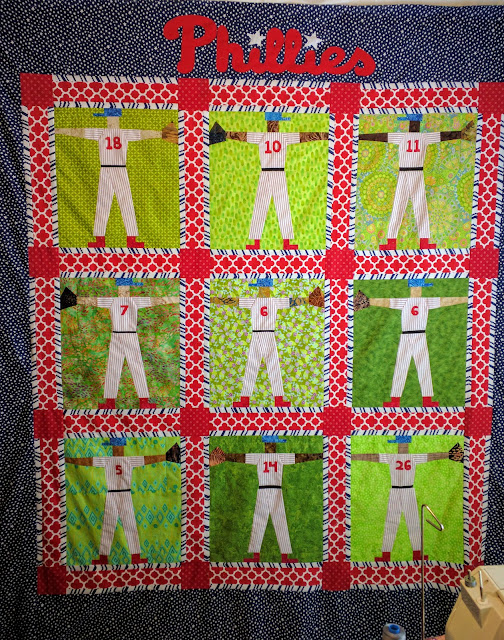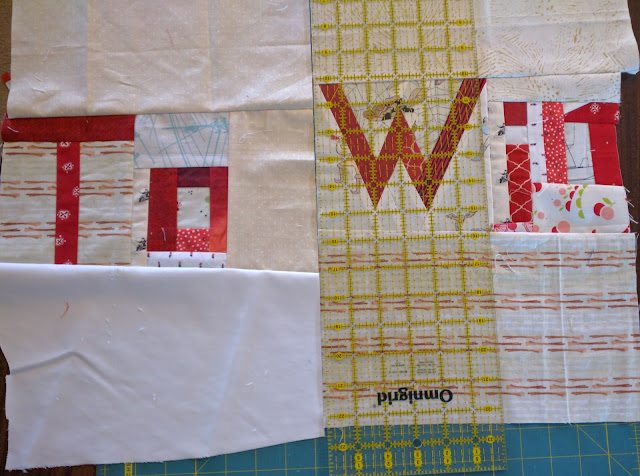I've been focusing more on the mechanical "how" of adding words but what you choose to add is even more important. What moves you to creativity? A poem, a family scene, a political commentary? There is no ambiguity about your meaning when it's written.
Phillies Quilt Back
This is becoming a two-sided quilt. I made the words into sentences, added a new phrase, and now need to fit them all into a back. It must be large enough yet not cut any words off so I pieced it with the top underneath.
Pulling all my neutrals, I first placed smaller bits where they might best fill in. I'm finding I like the effect of turning the corner with the same fabric. Look at the white above and to the right of Phillies for an example. Odd, because my original idea was to NOT sew same fabrics together.
 |
| Arranging sentences to fill a quilt back |
Probably because they were left-adjusted on the wall, that arrangement became my favorite. Except the "for who" line was too long. I considered right adjusting the answering line but... No, that's too much trouble.
There was one puzzle piece, the stripe below "my teammates" which required partial seams. Not too hard. Fortunately, I had switched to ruler use and squaring the fabric as soon as the words were together. It was easy to determine the size of that rectangular bit.
At this point, the back is still too small by about ten-inches lengthwise and fifteen-inches widthwise. Since I've never been very interested in matching front and back (and don't want to risk cutting off any letters) I intend to frame the sentences. Here are three fabrics I considered for for a border. While I like the black and white best, I don't want anything to compete with the words. The red might disguise the beginning letters too much. What's left? White.
 |
| Choosing fabrics to frame the quilt back |
Unfortunately there wasn't quite enough white so the lower right has the last bit of that white-and-blue from the sashing plus two shirting remnants. I know one is from a trip to NYC but have no idea where there other came from.
 |
| Finished back for Phillies quilt |
Yes, I'm deliberately cutting off the top line again to give the recipient privacy. Above his name is a band of white. The top and back are ready to go and the back is larger than the front by at least two-inches on each side. Hopefully this will make basting a breeze.
What does the front look like? Here it is, covering the design wall.
 |
| Philadelphia Phillies quilt |
PS: I know there are two sixes on the shirts. One is for a Phillies player while the other played at LSU (Louisiana State University) when the FO was there. {Actually, three of these numbers represent LSU players.}
Enjoy the day, Ann
InLinkz removed because it was hacked.

































